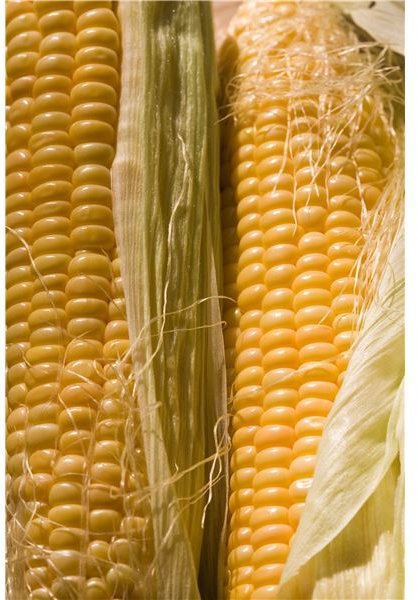The Debate Over GMO Labeling: Where do You Stand?
GMOs: The Debate
Genetic modification allows traits from certain plants or animals to be combined with others. While purpose and technique vary, a common goal is to improve yield or nutritional value, or to give crops desired characteristics that don’t occur naturally – such as disease or insect resistance. Thousands of products in the North American food chain contain some form of genetically modified (GM) ingredients, but because there are no mandatory labeling requirements, it is difficult for consumers to know which ones. For many people, that’s a problem.
Why They Should Not be Labeled
Those in favor of labeling genetically-modified organisms (GMOs) say it is a matter of “right-to-know.” They want GMO ingredients added to the label so they can make informed choices about the food they eat. Those opposed to labeling say it offers no additional nutritional information, and could be construed as a type of warning – causing unnecessary fear of GMOs.
Bold statements and hype plague both sides of the debate. At one end of the spectrum, supporters of GMOs believe that GM foods are totally safe, are no different from foods made from crops modified by thousands of years of conventional breeding, and that they will usher in a new era of global food security. At the other end? Concern that GM food could disrupt natural biodiversity, that GM technology could create and unleash potentially harmful strains of crops, or that GM ingredients could cause negative effects on human health – including allergies and organ toxicity.
Individual GM crops have been studied extensively, and the general consensus among a broad group of scientific and medical organizations is that GM crops are safe to eat and pose no more threat to the environment than conventional crops. Lack of evidence does not necessarily mean concerns are unfounded. GMOs have only been around for a few decades; while they have been studied extensively, none of the research has looked at long-term effects on either human health or the environment.
In September, Scientific American defended GMO science and made their position clear in an article entitled “Labels for GMO foods are a bad idea.”
Last year, the Board of Directors of the American Association for the Advancement of Science issued a statement saying, “There are several current efforts to require labeling of foods containing products derived from genetically modified crop plants, commonly known as GM crops or GMOs. These efforts are not driven by evidence that GM foods are actually dangerous. Indeed, the science is quite clear: crop improvement by the modern molecular techniques of biotechnology is safe. Rather, these initiatives are driven by a variety of factors, ranging from the persistent perception that such foods are somehow “unnatural” and potentially dangerous to the desire to gain competitive advantage by legislating attachment of a label meant to alarm.”
Why They Should be Labeled
Labels provide information on characteristics of products that consumers have no way of evaluating themselves, and in over 60 countries around the world, people are able to learn through labeling whether or not a product contains genetically modified organisms. The lack of mandatory labeling in Canada and the United States, however, means that North Americans are not as lucky. And many of them do, indeed, want the right to choose; as of mid-September this year, close to 144,000 people have shown their support for GMO labeling by joining the “Demand GMO Labeling” campaign of the popular Buycott consumer site.
There are a number of resources for anxious consumers trying to avoid GMOs. The “Non-GMO Shopping Guide” and the “Non-GMO Project” offer a wide range of information. For a quick, common-sense approach to avoiding GMO ingredients and choosing healthier foods, Canadian Dietitian Christy Brissette has a few simple tactics:
- Choose organic foods. “Anything labelled as organic cannot be genetically modified.”
- Cook meals from scratch. “Some of the biggest culprits … in our food supply are things like corn and soy, so by avoiding processed foods and packaged foods, you are avoiding genetically modified foods.”
- Develop relationships with local farmers. “There are great farmers’ markets across the country.… By actually speaking to the farmers, you can become educated.”
- Avoid sugar. “Granulated sugar comes from sugar beets, which are genetically modified.”
- Plant your own fruits and vegetables.
- Look for smaller food companies that voluntarily label their products as GMO-free.
Further Resources:
Label GMOs https://www.labelgmos.org/the_science_genetically_modified_foods_gmo
Non GMO Shopping Guide https://www.nongmoshoppingguide.com/
Non-GMO Project https://www.nongmoproject.org/
References
- 1. GMO fears do not ’translate to the average consumer’ - Canada … (n.d.). Retrieved from http://www.cbc.ca/news/canada/story/2013/04/10/f-gmo-genetically-modified-foods-
- 6. No: Labels on GM foods unnecessary; biotech crops are “safe … (n.d.). Retrieved from http://www.environmentalhealthnews.org/ehs/news/2012/no-labels-on-gm-foods
- 4. Buycott “Demand GMO labeling” Campaign (n.d.) Retrieved from http://www.buycott.com/campaign/211/demand-gmo-labeling
- 5. Labels for GMO Foods Are a Bad Idea (Sept, 2013) Retrieved from http://www.scientificamerican.com/article.cfm?id=labels-for-gmo-foods-are-a-bad-idea&page=2
- 3. Centre For Food Safety (n.d.) Retrieved from http://www.centerforfoodsafety.org/ge-map/#
- 2. AgBioForum 3(1): Labeling Policy For GMOs: To Each His Own? (n.d.). Retrieved from http://www.agbioforum.org/v3n1/v3n1a08-caswell.htm
